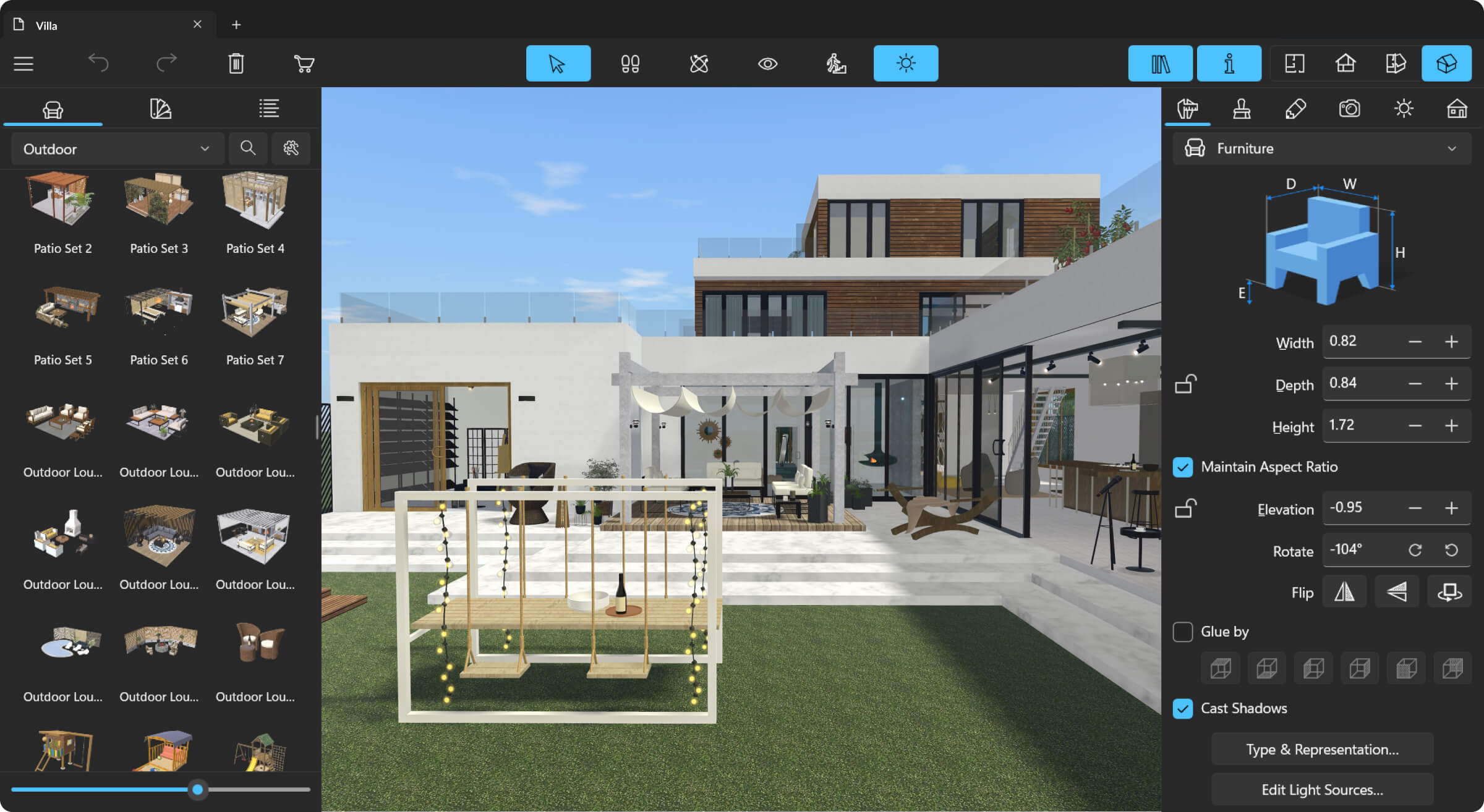Transform your space with NFTs and digital art, offering vibrant and engaging experiences right on your walls. By embracing digital displays, you’ll easily access and showcase diverse art collections without needing physical space. These displays can be swapped at a whim, adding dynamic touch and personalization to your home. NFTs ensure authenticity, offering new ownership concepts and investment opportunities. Stay tuned to explore how this digital evolution is changing the art world.
Understanding NFTs and Their Role in Digital Art
In the rapidly evolving world of digital art, understanding NFTs (Non-Fungible Tokens) is essential. You’re probably wondering why they matter. NFTs represent ownership of unique digital items, like artwork or music, on a blockchain. This technology ensures that your digital art is one-of-a-kind and can’t be duplicated. When you purchase an NFT, you’re not just buying an image; you’re acquiring a token that proves your ownership and authenticity.
Imagine having a digital painting that no one else can claim as theirs. NFTs empower artists by allowing them to sell their creations directly to you, bypassing traditional galleries. They also enable artists to earn royalties on future sales. By embracing NFTs, you’re part of a revolution that redefines how digital art is valued and traded.
The Evolution of Art Display: From Traditional to Digital
As art continues to evolve, the way we display it has undergone a significant transformation from traditional galleries to digital platforms. You no longer need to visit a physical gallery to experience art. Instead, digital platforms allow you to explore diverse artworks from anywhere. This shift opens up endless possibilities for artists and art lovers alike.
With digital displays, artists can showcase their work to a global audience without the constraints of physical space. You can engage with art in interactive and immersive ways, enhancing your appreciation and understanding. Digital platforms also make art more accessible, breaking down barriers and democratizing the art world. This evolution not only redefines how you experience art but also how artists create, share, and monetize their work.
How to Start Your Own NFT Art Collection
To start your own NFT art collection, focus on choosing the right marketplace where artists showcase their digital creations. You’ll also need to understand how blockchain wallets work, as they’re essential for buying, storing, and managing your NFTs. By getting familiar with these elements, you can confidently navigate the world of digital art collecting.
Choosing the Right Marketplace
So, how do you choose the right marketplace for your NFT art collection? Start by assessing your goals and preferences. Not all marketplaces are created equal, and you’ll want one that aligns with your vision and needs. Here are some factors to consider:
- Reputation: Go for marketplaces with a solid reputation and positive reviews to ensure your investments are secure.
- Fees: Check listing and transaction fees, as these can vary widely and impact your overall profit.
- User Interface: A user-friendly platform makes buying and selling NFTs a breeze, so look for intuitive navigation.
- Community: A vibrant, active community can offer support, collaboration, and inspire your collection journey.
Selecting the right platform can enhance your NFT experience significantly.
Understanding Blockchain Wallets
Before diving into your NFT art collection, understanding blockchain wallets is crucial. A blockchain wallet is your digital vault, securing your cryptocurrencies and NFTs. You’ll need one to store, send, and receive digital art securely. Start by choosing between software wallets (online) and hardware wallets (offline). Software wallets like MetaMask offer convenience, while hardware wallets like Ledger provide extra security.
Once you’ve chosen, set up your wallet by downloading the app or purchasing the device. Always back up your recovery phrase—losing it means losing your assets. Connect your wallet to NFT marketplaces to start collecting art. Remember, each transaction requires a small fee, paid in cryptocurrency, so ensure your wallet’s funded. With these steps, you’re ready to explore the digital art world confidently.
The Benefits of Displaying Digital Art at Home
Ever wondered why displaying digital art at home has become a modern trend? It’s all about personalization and flexibility. You can easily swap or update the pieces you display without the hassle of physical art. Digital art also adds a dynamic touch to your space, making it more vibrant and engaging. Here’s why you should consider it:
- Versatility: Change your art with your mood or the season with just a few clicks.
- Space-saving: No need for physical storage; your wall display becomes an endless canvas.
- Interactive: Some digital frames offer interactive features, making art viewing more engaging.
- Eco-friendly: Reduce the need for physical materials and shipping, contributing to sustainability.
Transform your home and embrace the future of art!
Exploring the Technology Behind NFT Art Displays
While digital art brings a unique flair to your home, the technology behind NFT art displays takes it a step further. You can transform your walls into a dynamic gallery with sleek digital frames that connect to the blockchain. These frames ensure your NFT art is authentic and securely linked to its digital certificate. You won’t have to worry about unauthorized copies or reproductions, as each piece has a unique identifier.
The technology allows you to switch artworks effortlessly, updating your space whenever you like. You can control the display via apps on your smartphone, giving you flexibility and ease of use. Plus, high-resolution screens ensure vibrant and detailed visuals, making your digital art experience as immersive as possible. It combines innovation with aesthetics, enhancing your living space.
The Future of Art Ownership in a Digital World
You’re witnessing a shift in how art ownership is defined as digital art gains prominence in the market. Blockchain technology not only secures transactions but also enhances the authenticity and traceability of artworks. With these changes, you might find the concept of ownership rights evolving to accommodate the unique characteristics of digital assets.
Digital Art Market Trends
As the digital art market continues to evolve, it’s clear that the future of art ownership is undergoing a significant transformation. You might wonder how these changes affect you. The rise of NFTs (non-fungible tokens) has made digital art more accessible than ever before, changing how you interact with art. Now, you can own a piece of digital creativity, showcasing it in virtual galleries or on social media. This shift has democratized the art world, allowing new voices to emerge and thrive.
Consider these trends shaping the market:
- Global Reach: Artists can connect with collectors worldwide, expanding their audience.
- Instant Transactions: Buying and selling art is faster and more convenient.
- Increased Accessibility: More people can participate as creators and collectors.
- Evolving Experiences: Virtual reality offers immersive art interactions.
Blockchain Authentication Benefits
In the digital art world, blockchain authentication offers clear benefits that are shaping the future of art ownership. When you buy digital art, you want to ensure it’s authentic and unique. Blockchain technology provides a secure way to verify this. Each piece of digital art can have a permanent, tamper-proof record on the blockchain, confirming its originality. You don’t have to worry about forgeries or duplicates because the blockchain acts as a digital ledger, tracking the history of ownership and transactions.
Moreover, blockchain authentication enhances trust between artists and buyers. You’ll know exactly who created the art and its entire ownership history. This transparency not only protects your investment but also supports artists by ensuring their work is properly credited and valued in the digital realm.
Ownership Rights Evolution
While digital art is increasingly becoming mainstream, ownership rights are evolving to keep pace with this shift. You’re witnessing a transformation in how art is owned, licensed, and transferred. NFTs provide a new frontier, where your ownership is not just about possessing a piece but having a stake in its provenance and authenticity. The digital realm allows for flexible rights management, making it easier for you to navigate and secure your art investments. As you explore this space, consider the following:
- Smart contracts automate transactions and enforce terms, ensuring your rights are protected.
- Fractional ownership lets you own a piece of high-value art without buying it entirely.
- Royalties can be programmed to pay artists with each resale.
- Interoperability enables seamless transfer across different platforms.
Frequently Asked Questions
How Do NFTS Impact the Value of Traditional Physical Art?
You might find that NFTs cause traditional art values to fluctuate. They introduce new collectors to the art market, increasing demand for digital art. However, they also encourage comparisons, sometimes leading to a reevaluation of physical art’s worth.
What Are the Environmental Concerns Associated With NFTS?
You might worry about NFTs’ environmental impact due to the energy-intensive blockchain technology they rely on. The carbon footprint from mining and transactions can be significant, urging you to consider more eco-friendly blockchain alternatives.
Can NFTS Be Used in Art Therapy Practices?
You can definitely use NFTs in art therapy practices to explore emotions and creativity. They offer a unique digital medium for expression and can help you connect with others in virtual spaces, enhancing therapeutic experiences and engagement.
How Do Artists Protect Their Digital Art From Piracy?
You can protect your digital art by using watermarks, setting up digital rights management, and employing blockchain technology for proof of ownership. Always keep original files secure and consider licensing agreements to enforce your copyrights.
Are There Legal Challenges in Creating or Selling NFT Art?
You might face legal challenges when creating or selling NFT art, like copyright issues and questions about ownership rights. Ensure you understand intellectual property laws and consult legal experts to protect your work and navigate these complexities.




